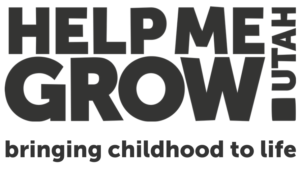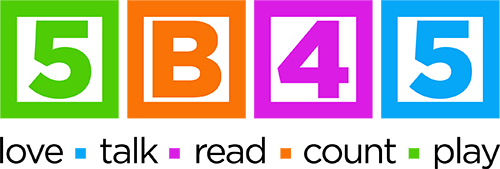Your baby was born to be a “math person.” Their mind is ready to organize the world into numbers, sizes, shapes, and patterns, and counting is one of the first steps. They can learn to count even before they understand what the numbers mean. When you count fingers or toes or compare things with your children, you equip their minds with valuable skills for a future of learning, growing, and problem-solving.
Count it out
The Science
Math is everywhere
Your baby is taking statistics on everything they hear, see, and touch from the moment they’re born. Research shows that they are wired to recognize amounts and patterns. As you count with you baby, they will start to be able to put together strings of numbers. Soon enough, they will begin to understand how many things those numbers stand for. The more you count, compare, group things together, or talk about shapes, the more you will build on the amazing work their brains are already doing to make sense of the world.
How to do it
Everything counts!
You can count everything! You don’t have to go out of your way or set aside extra time to count and build a strong foundation for math. You can count toys or bites of food. You can talk about distances and tell your baby how far you need to go to get home. You can describe the shapes of windows, trees, toys, or anything else you see. You can compare objects or place them into groups. You can even clap to the beat of a favorite song. Doing these kinds of things can help your child organize their world and start to understand math for the rest of their lives.
5b45 + Nutrition
Nutrition Counts too!
Counting goes a long way when cooking and eating—from plates and cups, to measurements like ‘quarters’ and ‘halves.’ Go ahead and bake away, and take a second to explain what you’re measuring.
Count your beans
Start with a jar of dried beans and one die. Have your child roll the die a couple times and, after each roll, have her count the number of dots on the die face up. After she counts the dots, ask her to pull the same number of beans from the jar to create a bean pile. Now put, say, five raisins (or other yummy snacks) in a line and tell her you’ll trade her the raisins for the same number of beans. She’ll first count the raisins and then count the beans to be traded.
Suggested Age Range: 0-1
Vroom Tip #122
Space Explorer
Show your child the world from different points of view. When they’re in your arms, crouch down low or gently lift them up in the air. Describe what you’re doing and respond to their reactions. “You’re as high as the light! Look what you can see up here!”
Moving your child around and talking about what you’re doing helps them learn about important concepts like shape and space. Children learn these concepts through back and forth conversations, where you follow their lead and respond to their reactions.
Vroom Tip #338
Counting Kisses
At bedtime, give your child kisses on different parts of the face, like on their forehead, nose, cheeks, or ears. Count the kisses out loud and name each body part as you go. As they get older, encourage them to give you kisses and count them together.
Your baby learns about the world by paying attention to the things you focus on. When you kiss their nose and describe what you’re doing, you’re helping them feel loved as well as learn new words. It’s never too early to start exploring math and numbers by counting out loud with your baby!
Vroom Tip #831
Toy Box
Save a few empty and safe containers, like an egg carton, cereal, or pasta boxes and give them to your child. What do they do? Pick them up? Hit them together? Talk with your child about what they held, their shapes, and colors. Stack them up and talk about new shapes they make!
Empty food containers are interesting and fun toys. Exploring them gives your child a chance to learn about size, shapes, and colors. This is the start of developing concepts they can use to understand their experiences.
Suggested Age Range: 1-2
Vroom Tip #51
Stair Count
When your child is learning to walk up and down stairs, hold their hand, and count each step you take. This will help them become familiar with their numbers and think it’s a fun game at the same time!
Making connections between numbers and what they stand for (such as the steps your child climbs or the fingers on their hands), helps them see that numbers aren’t just words they memorize, but they actually stand for quantities of things. It’s the beginning of learning math.
Vroom Tip #999
Watch and Learn
Offer your child something common like a scarf, an empty box, or a pot. Watch to see what they do. Do they try to put the scarf in the box or the lid on the pot? Boost their learning by commenting on what they’re doing, “You put the scarf in the box!”
Helping your child explore what they can do with an object supports curiosity and creativity. They’re also building thinking skills to understand the concepts of size and shape.
Vroom Tip #311
Mirror Play
Brushing your child’s teeth? As you look in the mirror, talk about how your faces are the same and different. You both have two eyes and a nose, but yours are bigger. You both can make funny faces. Make a funny face and see if you can make them laugh!
Comparing how your faces are the same and different helps your child learn to sort objects and experiences into categories. Sorting information into categories is important for reading, math, and science. And this game builds the connection between you!
Suggested Age Range 2-3
Vroom Tip #49
Category Convos
Tell your child about a favorite food. Ask them to name a food they like that’s in the same category, like fruit, but different. Keep count of how many different things you both like in the same category. Play the same game with something else, like clothes.
This game is teaching your child about categories; things that are the same in important ways, though different in others. They’re also learning about your likes and dislikes compared to theirs, helping them learn about other people.
Vroom Tip #613
Kitchen Scooper
Give your child a spoon and a safe container like a plastic bowl. Offer them another container with a snack, like a few cut grapes or crackers. Invite them to scoop or pour the food back and forth and talk about it, “You poured the crackers!”
Your child is practicing problem-solving skills as they work to pick up and transfer the food from one container to another. They’re learning to focus and control their actions to pursue a goal, which are skills for the future.
Vroom Tip #489
Big Foot, Little Foot
Have your child help sort socks and find pairs when you’re doing laundry. While they do it, you can chat about which socks go together and why. Are they the same color, pattern, or size? Help them hold the socks next to their feet, then your feet, and talk about the differences. Who has big feet and little feet in your family?
Grouping, and figuring out what’s the same and what’s different, helps your child to understand the world around them. Back-and-forth chats help them connect their world to words. Plus it builds their vocabulary!
Suggested Age Range: 3-4
Vroom Tip #257
Comparison Shopping
The grocery store can be a great place to build your child’s brain on the go. Give them a banana and an apple to hold. “Which is heavier? Which is larger? Which is softer?” You can do this with any items, in any aisle. Or even in any store!
Games like these help your child to think like a scientist because they’re observing the world around them and making guesses about how things compare or fit together. Repeat the game a few times with different foods for them to compare. Remember, repetition is how we learn!
Vroom Tip #225
Big Time
Play “Big Time” to make waiting time fly by. Hold up an object—a magazine, an item from a bag, or a toy. Ask your child, “Can you find something bigger than this?” After they do, then ask, “Can you find something smaller than this?”
When you take turns asking questions, this game becomes a back and forth conversation about size. It is a chance for them to focus on and explore the idea of size—something they will use to organize their understanding of the world.
Vroom Tip #29
Beat and Repeat
Play “Beat and Repeat” anywhere. Create a rhythmic beat with two claps. Can your child copy it? Repeat until they get it. Have them create their own rhythm with two claps. Anytime someone misses, try again. Then make it three beats. How many beats can you get to? Four? Five? Six?
Your child develops self-control as they copy your patterns or create their own. If they make a mistake, all the better. They learn that mistakes are a necessary part of learning—a good lesson no matter how old you are!
Suggested Age Range: 4-5
Vroom Tip #199
Nature Patterns
Have your child collect items like rocks and leaves. Arrange them in a pattern like one rock, two leaves, one rock, two leaves. Then mix them up and ask them to recreate your pattern. Can they remember the order? Have them take a turn making a simple pattern for you to remember.
Noticing and recreating patterns requires your child to use their focus, memory, and ability to make connections. These are all important skills for learning. Playing with patterns also gives them practice with math ideas like numbers, shapes, and comparing sizes.
Vroom Tip #541
Ready, Set, Count!
Turn setting the table into a learning game. As you and your child count out plates and silverware for dinner tonight, ask them, “How many plates would we need if a friend comes to eat with us?” Or “How many plates will we need if someone isn’t home to eat?”
When you ask your child to adjust their thinking and counting to fit a different situation, you help them learn to relate one piece of information to another. This helps them learn to reason and think in creative and flexible ways. And they’re learning math too.
Vroom Tip #68
Color Countdown
Challenge your child to find as many things as they can that are blue. Get creative by limiting the game to a specific time (three minutes or so) or place (the grocery store.) Have them count how many they find. Switch it up by looking for letters or objects instead.
Your child is practicing focusing in this game. They are also using their memory to remember the color and the number of times they have seen it. Playing this game with different rules helps your child learn to think flexibly and make new connections.
Dig Deeper
Check on your child’s development!
Young children can be introduced to foundational math skills, such as counting, in the home at an early age. Counting body parts, toys, or other items in the home strengthens cognitive and problem solving skills. Discover more about these milestones in your child’s development by completing a developmental screening from your doctor or child care provider or through Help Me Grow Utah.

Need more help?
Check out our community resources page.

